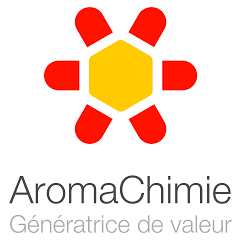
Exertional myopathy in horses is a syndrome of muscle fatigue, pain, or cramping associated with exercise. Less common exertional myopathies that cause exercise intolerance without muscle necrosis include mitochondrial myopathies, type 2 polysaccharide storage myopathy, and myofibrillar myopathy in Warmblood and Arabian horses. Most commonly, exertional myopathies produce necrosis of striated skeletal muscle and are termed exertional rhabdomyolysis. Although exertional rhabdomyolysis was previously considered a single disease described as azoturia, tying-up, or cording up, it is now known to comprise several myopathies, which, despite similarities in clinical presentation, differ notably in etiopathogenesis.
All breeds of horses are susceptible to sporadic exertional rhabdomyolysis. The most common cause is exercise that exceeds the horse’s state of training. The incidence of muscle stiffness also has been found to increase during an outbreak of respiratory disease. Dietary deficiencies of sodium, vitamin E, selenium, or a calcium-phosphorus imbalance may also be contributory factors.
A diagnosis of sporadic exertional rhabdomyolysis is made on the basis of a horse with no previous history or a brief history of exertional rhabdomyolysis, clinical signs of muscle cramping and stiffness after exercise, and moderate to marked increases in serum CK and AST activities.
Immediately on detection of clinical signs of exertional rhabdomyolysis, exercise should stop and the horse should be moved to a well-bedded stall with access to fresh water. The objectives of treatment are to relieve anxiety and muscle pain and to correct fluid and acid-base deficits. Tranquilizers with opioids can provide immediate relief of anxiety and stiffness; NSAIDs can be administered to a well-hydrated horse. Most horses are relatively pain free within 18–24 hours.
Severe rhabdomyolysis can lead to renal compromise due to ischemia and the combined nephrotoxic effects of myoglobinuria, dehydration, and NSAID treatment. The first priority in horses with hemoconcentration or myoglobinuria is to reestablish fluid balance and induce diuresis. In severely affected animals, regular monitoring of BUN or serum creatinine concentration is advised to assess the extent of renal damage. Diuretics are contraindicated in the absence of IV fluid therapy and are indicated in combination with IV fluid therapy if the horse is in oliguric renal failure.
Horses should be stall rested on a hay diet with a dietary vitamin and mineral ration balancer supplement for up to a few days. For horses with sporadic forms of exertional rhabdomyolysis, rest with regular access to a paddock should continue until serum muscle enzyme activities are normal. Because the inciting cause is usually temporary, most horses respond to rest, a gradual increase in training, and dietary adjustment. Endurance horses should be encouraged to drink electrolyte-supplemented water during an endurance ride and monitored particularly closely during hot, humid conditions.
Horses with type 1 PSSM have constitutively active glycogen synthase that is further stimulated by increased blood insulin concentrations, resulting in high muscle glycogen concentrations. When fed a starch meal, these horses take up a higher proportion of the absorbed glucose in their muscles than do healthy horses. Quarter Horse-related breeds with type 2 PSSM also have abnormal glycogen storage, and, although the cause of this myopathy is unknown, they are fed similarly. The ideal diet for PSSM is based on feeding forage at a rate of 1.5%–2% body wt, providing >15% of digestible energy as fat and limiting starch to <10% of daily digestible energy by limiting grain or replacing it with a fat supplement. Caloric needs should be assessed first to prevent horses becoming obese on a high-fat diet. Improvement in clinical signs of exertional rhabdomyolysis for horses with PSSM requires both dietary changes and gradual increases in the amount of daily exercise and turn-out.
Triple R is product which would become very handy to fight exertional myopathy. Triple R contains high level of vitamin E and Magnesium to support loose muscles. In addition to that vitamin E has antioxidant and can prevent sore muscles. The contyained amino acids are also needed for regeneration and development of muscles. Triple R is highly recommended for increased training periods and during competitions.
